One of the most misunderstood concepts in Jewish Tradition is that of the Tzadik Yesod Olam
There are many Tzadikim in the world, but only one is the Tzadik Yesod Olam. Real Tzadikim are powerful. But what is a Tzadik? You may recall I wrote in this other article that Tzadikim are not your run-of-the-mill Rabbis, but spiritual masters who have transcended the limits of the human body and have rectified their Middot to a great extent. They are knowledgeable on all parts of Torah, are almost entirely only compassionate, and some can do miracles, know the future and/or the past.

This transformation is a natural part of breaking the chains of the physical world. As such, Tzadikim shun physical pleasure as Rabbi Chaim Vital writes in Shaarei Kedusha, they speak only as much as possible, barely sleep and aspire to serve Hashem to the very best of their abilities. We find that it’s good to pray at Kivrei Tzadikim, it’s good to attach oneself to them, and it’s good to be in their presence.
However, there is one Tzadik who towers above the entire generation, and this is the Tzadik Yesod Olam. It’s difficult to describe and have an idea on what “makes one the Tzadik Yesod Olam” because… well, there’s only one in every generation. He also doesn’t look “anything special” to most people because it’s not in his interest to “attract followers”, fame, and money.
None of this is “my Chiddush”, there are plenty of sources out there, especially the Zohar and the Kitvei Ari that corroborate these ideas.
I’d like to bring your attention to the main source here:
Rav Chaim Vital’s Drasha on the Tzadik Yesod Olam in Pri Etz Chaim, Sha’ar Rosh Chodesh Perek 3:
“And behold, in every generation, there is one righteous person worthy of being the leader of the generation. He too walks and comes with the people of his generation, to illuminate them. This is the initial light, and afterward, the sun rises. This is what our sages said: before the sun of Eli (the Kohen Gadol) sets, the sun of Samuel the HaRamathi (the prophet) rises.
Before the passing of the righteous one, another righteous one is born, as our sages say. And this is the “sunrise and the setting of the sun to its place”. The intention is that when the righteous one departs, from there he illuminates the remaining Tzadik in his place. This is ‘to his place,’ meaning the righteous one who remains in his place, aspiring and rising there.
And it is said, ‘All the rivers go to the sea,’ aside from the inclusive leader, there are several wise individuals who lead the generation. These are all the rivers that go, which are Torah scholars who emerge from this righteous one, and they branch out from him. All of them go to the sea, which is the collective, to correct and guide them. The sea is not full, and it does not behave and fulfill the Torah and commandments properly so that they will return and roll, along with the wise individuals, to the place where the rivers go. They return to go and return with that generation.“
Another source from the Holy Zohar
While Chassidut in general, and particularly Breslov, emphasized the concept of Tzadik Yesod Olam, there is a source in the Zohar in Parshat Vayeirah. In this section which is probably the shortest one, there’s a story of how Rabbi Shimon Bar Yochai encountered an angel “the size of a mountain” who held 30 balls of fire around him. When Rashbi asked what the purpose of these were, the angel told him “to destroy the world, because Hashem did not find 30 Tzadikim (or maybe simply righteous people) in the generation.”
Unfazed, Rabbi Shimon Bar Yochai told the angel to go back to Hashem. The angel went and told Hashem “Master of the universe, it is revealed to you what Bar Yochai told me”. Hashem told the angel not to pay attention to him and fulfill his mission. When Rashbi saw the angel again he told him to go back if he doesn’t want to be chained like Aza and Azel, the two fallen angels that challenged Hashem and are imprisoned in the Harerei Kedem (Eastern Mountains, somewhere in India). These were the two angels from whom Bila’am learned his sorcery.
Continuing on his lesson, Rashbi charged the angel to tell Hashem that if there aren’t 30 Tzadikim, there are at least two, he and his son Rabbi Elazar. And if his son is not worthy, then there is he himself as it is said (Mishei/Proverbs 10:25): “V’Tzadik Yesod Olam” (the Tzadik is the foundation of the world).
We see then that this Tzadik Yesod Olam one only, is alive and breathing, and is in flesh and bones. He is one real, actual person, and he illuminates the generation. Back in the days it used to be easier to know who he was. It was the Patriarchs, then Yosef, Levi, Amram, Moshe Rabbenu, then Yehoshua, then the judges, then Eli, then Shmuel, then Shaul (or David), and so on. Later on, it became the prophets or (some of the) kings, then the sages of the Talmud, first Tannaim (like Rabbi Yehuda HaNasi), then Amoraim.

Then it got a bit complicated since so much of history is twisted and whitewashed so we don’t know much later on except the Arizal, Rav Chaim Vital, the Baal Shem Tov and Rebbe Nachman of Breslov. Either way, there was always a Tzadik Yesod Olam to look after the generation, and often, he was hated and faced tremendous opposition because people often don’t like “being told what to do”.
- Can it enter one’s mind that the Jews in the desert made the “Kinui” (declared jealousy) toward their wives against Moshe?
- Can it enter one’s mind that the majority of Jews wanted David dead when he was running away from Shaul?
- Can it enter one’s mind that Mordechai was scorned (and probably persecuted) by the Jews of Shushan when he told them not to participate in the meal of Achashverosh?
- Can it enter one’s mind that so many Jews actually hated the Chashmonaim and didn’t want anything to do with them? You know, for “stirring the pot” against the Syrian Greeks on that holiday of Chanukkah everyone loves?
Tzadikim face opposition and Rebbe Nachman of Breslov teaches us in Likutey Moharan that all that is like water to make the tree grow. Whatever form this opposition takes, whether it’s slander, accusations, lies, mockery and even outright persecution, this is all in order to raise the Tzadik to a greater level.
The confusion surrounding the concept of Tzadik
While many other traditions have corrupted this idea, the figure of the Tzadik Yesod Olam is rooted in many sources in Tanach and the Talmud.
Now, of course, there is a lot of confusion as to “what” one gains by being attached to this Tzadik Yesod Olam, or any of the Tzadikim for that matter, and what that would entail.
Should one dedicate his life to the Tzadik? Give all his money? Blindly follow his every directive? Have scores of his pictures adorning every room?
Of course, all of this is nonsense.
Most people will argue that as long as you fulfill the Torah, you don’t need a Tzadik, because you don’t “need an intermediary”. And there is some truth to that.
But, a Tzadik is not “an intermediary” between you and Hashem. Rather, he’s a powerful helper who can rise you to levels beyond what you’d reach alone. Someone who can inspire and teach us about the levels above that we can’t imagine. The real Tzadikim, of course, not the many fakers we have nowadays posing as big Rabbis. I’m not talking about decent Rabbis who deserve our respect, I’m talking about distorters of our Torah who think they are big shots and are deceiving the public.
Most of us don’t pay attention to how our environment or who we look up to influences us, or how our goals in Avodat Hashem vis-a-vis others can either propel us forward or hold us down. It is difficult to see all this because it’s not readily perceivable, but again there are many sources in the Talmud that attest to that.
The people with whom we interact have a lot more power in our way of thinking than we give credit for because we “want to fit in” and we “like being liked”. No one wants to be an outcast and this is also one of the sources for many psychological phenomena like “group behavior” and “mass paranoia” that people experience. Whether we like it or not, we are attached to our surroundings and try to adapt.
And so, in this other article I mention a little bit about my experience with the Tzadik Rav Eliezer Berland Shlit’a and I’m thoroughly convinced he is this Tzadik that Rashbi and Rav Chaim Vital and talk about. But this is something that needs to be thoroughly researched, and I haven’t found anything better than learning about his life to convince someone of this fact.
For those interested in knowing more about him, you can download the 3 books “One in A Generation” as the author made it available for free here:
Benefits of coming closer to a Tzadik Yesod Olam
One can attach oneself to the Tzadik Yesod Olam by reading about his life, learning his works, praying his prayers, following his customs or merely being in his presence. This may sound very redundant and silly, but we attach ourselves to that which we connect to. Whoever we associate with and whatever we see, eat, smell, and do become a part of us, whether it’s to the side of Kedusha or Tumah.
It’s a simple as that.
Beyond simple advice, the Tzadik Yesod Olam puts us on a new path of life, of Tikkun HaMiddot (rectification of character traits), gives us a new understanding Torah, and inspires us. For example, I never knew someone who could spend about 6 hours doing Birkat HaMazon (which takes less than 2 minutes for most people). But Rav Berland did just that, among other unbelievable things, as related to one of his sons in the book “One in a Generation”.
Skeptics will argue this is “Bittul Torah” (“waste of Torah time”). Why should one spend so much time in a single Mitzvah and what do you gain by that?

But for those who know how the human mind and how Dveikut is the source of transcendental wisdom, this shouldn’t be surprising. Indeed, one who wishes to have all sorts of spiritual experiences needs to accustom himself to being in this state of bonding with Hashem so the extraneous thoughts don’t interfere. This is the basis of all Yichudim and Kavanot which have as much power as the amount of soul/consciousness we put into them, and the Ramchal was famed for doing all the time (hence his exalted level).
The Birkat HaMazon is a Mitzvah, and like all Mitzvot, they are a portal that opens one’s mind to Hashem. While 6 hours may not sound practical to most people, the more time we spend on it, the more we open ourselves to the transcendental wisdom (Chokhmah) that is available to us.
Training in this regard can open the wells of our Partzufim, enhance our souls’ power, and bring down worlds blessings. It also expands our consciousness to understand the Torah on a deeper level.
Another problem is that many people would also accuse others of “overemphasizing the importance of Tzadikim, bordering on Avodah Zarah” (idol worshipping). That can really be a problem – if one is not careful, that is.
One should always keep in mind that there’s a clear separation between Hashem and the Tzadik. The Tzadik has no power except that w hich Hashem gives him. He also cannot abrogate decrees that are “written in blood”, only those that are “written in clay”, as the Zohar teaches. The Tzadik a servant of Hashem and cannot go against His Will, though he can certainly have a lot of persuasion power with his prayers, as that is one of the laws of Creation.
This is where things get tricky because there is always the danger of ascribing to the Tzadik Yesod Olam independence from Hashem (chas v’shalom).
Yet, surprisingly, Rav Chaim Vital teaches us in Sefer HaChezionot (“book of Visions”) that the Arizal told him to imagine his (the Arizal’s) face in front of him at all times, much like the Shiviti meditation. This was done in order to inspire awe and reverence of Heaven which the Arizal had on Rav Chaim Vital.
There’s a lot more to talk about this subject but we will have to continue later.
You may or may not accept this assertion of mine that Rav Berland is the Tzadik Yesod Olam, and that’s fine. I have found ample evidence supporting it, but everyone is free to choose whatever they want to believe in.
Nevertheless, no one can refute the sources that there’s only one who is like a “prince” in each generation.
Whatever path you choose, know that having a real Tzadik in life, and especially the Tzadik Yesod Olam, can be greatly beneficial to you.
This is, after all, an integral part of Torah and Avodat Hashem.

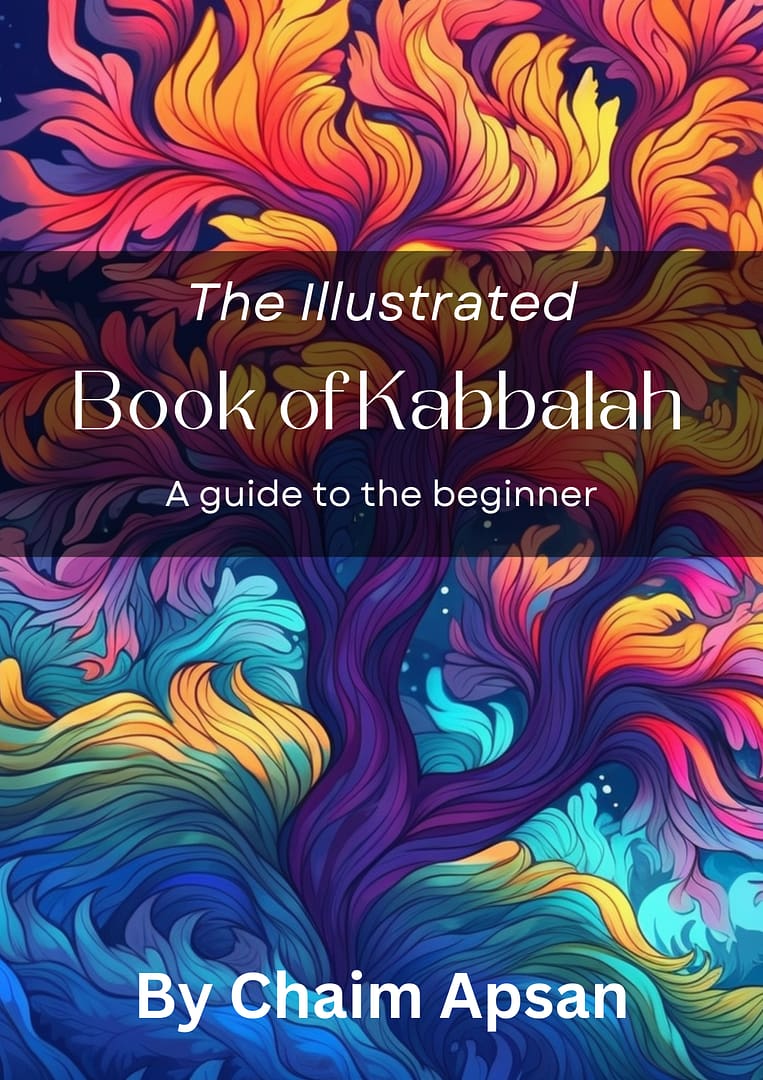





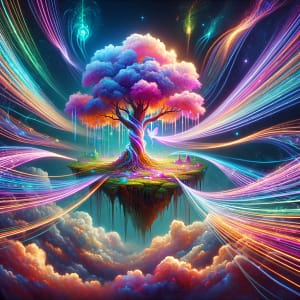
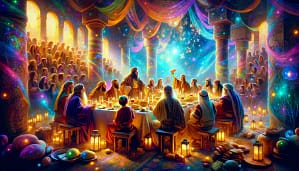
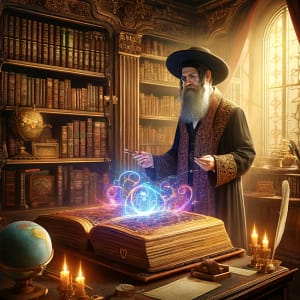
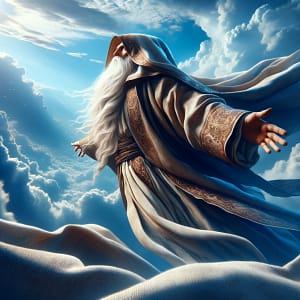


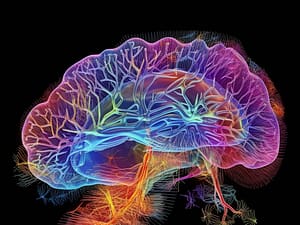
2 Responses
Almost a year ago, around 10 1/2 months ago, I was unsure if Rav Berland was the “righteous foundation of the world.” I prayed to God for, I believe, two nights, and I went out the next night with 5 dollars to give to charity, since I felt like I wanted to do something righteous, not expecting any reward then. I went out and it was all given to homeless people (of which there are plenty in Los Angeles), and as I was returning, close to home, I saw two very obviously Jewish men, with black suits, long beards, and long sidelocks. And one had a bag that said, “Banim” (he explained that it was from the childrens’ store Banim). I went up and thought, “There’s no way, but what if MAYBE it’s actually related to SHUVU Banim…” Behold, God willed that they actually were students of Rav Berland, here in the Jewish community in Los Angeles of all places. Praise Yah who does signs and wonders! This was a sign (ot).
I had another miracle that happened (that involved 160 dollars) from Rav Berland, and I recovered an important corrupted file on my computer in the merit of 20 dollars to Rav Berland.
Signs and wonders.
By the way, what do you mean, “Tzadikim are not just run-of-the-mill Rabbis, but spiritual masters, etc.”? As I’m learning Hebrew, TzaDIQ just means “righteous one.” I guess you’re using a more specialized meaning of it.
Sorry for the delay in answering, Simon. It’s great you are getting signs and synchronicities. It’s amazing how the Rav’s influence is growing as well and many people have stories like that. The Rav is available for everyone 😉
Regarding your question, many people believe their Rav is a Tzadik because he knows a lot of Gemara or stuff like that. He could be a great Rabbi, but in reality, a Tzadik is something much bigger than that and is very hard to spot. They work their entire lives to kill their desire for pleasure, study countless nights without sleep, give more Tzedaka than needed, and pray fervently with compassion for everyone (who is good). In fact, you saw that the Rav threw all his money overnight to people so he’d follow the minhag of the Baal Shem Tov and not sleep with any money and rely solely on Hashem the next day.
I will however concede that Rav Chaim Vital in Sha’arei Kedusha has a much simpler definition. He says that a Tzadik is someone who is a fully Torah observant Jew. Rebbe Nachman has a much more strict classification, probably because it’s much easier to fulfill the Torah, and we should hold people to higher standards and not call everyone Tzadik.